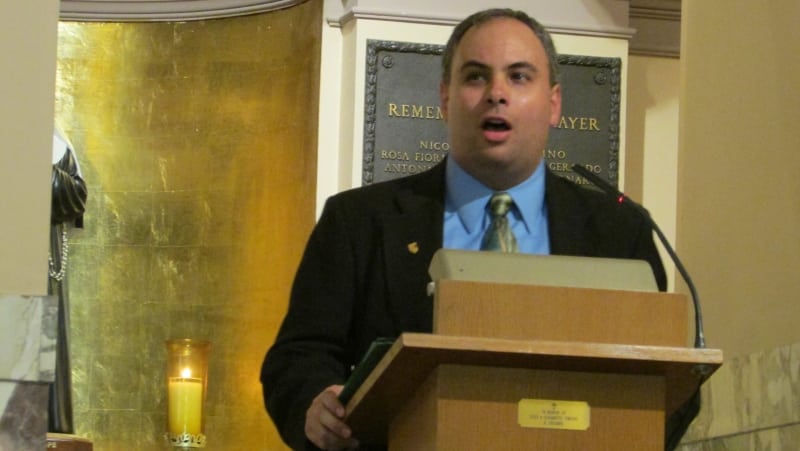
Congressman and Civil Rights Leader John Lewis and me at the 2004 Faith and Politics Institute Congressional Civil Rights Pilgrimage.
A short reflective article on my work with The Faith & Politics Institute’s 2004 Congressional Civil Rights Pilgrimage and its theological and spiritual meaning in light of the civil rights struggle of the 1960s. It was published in my ministry graduate school’s newsletter.
Washington Theological Union Tidings 30, no. 1 (Spring 2005):9.
Our Catholic tradition has always had a prominent place for the tradition of the pilgrimage, and through these journeys, we are called to re-enact, re-new, and re-member our own call to personal and social transformation in the light of the Gospel of Jesus Christ. Over spring break this year, I was blessed to be part of The Faith & Politics Institute’s Seventh Congressional Civil Rights Pilgrimage to Alabama.
The Faith & Politics Institute is a nonprofit interfaith organization located on Capitol Hill, where I did my pastoral internship in the summer of 2004. Through outreach to members of Congress, congressional staff and others in public service, the Institute seeks to fulfill its mission of “providing occasions for moral reflection and spiritual community to political leaders, drawing universal wisdom from a range of religious traditions.”
During our visits to a number of historic civil rights locations, we listened spellbound to the sacred stories of the Movement. We were also able to listen to first hand accounts from journalists and photographers whose coverage enabled the message of civil rights to reach a national audience and to drive home the heinous injustices of racism. I noted with particular interest the role the churches played in the civil rights struggle. It was clear that, during the Movement, faith and politics not only went together, but that both were needed to maintain courage in the face of the towering structures of white power.
Finally, our visit to AME Brown Chapel of Selma and our participation in the Sunday morning worship there was particularly poignant, because it was from that sanctuary that the first historic march from Selma to Montgomery began forty years ago. That march ended in bloodshed a few miles away on the Edmund Pettus Bridge, as Alabama State Police beat back the nonviolent marchers with billy clubs and tear gas. Among those beaten was Congressman Lewis. His eloquent stories of his early association with Dr. Martin Luther King, Jr. and the Freedom Rides, as well as his recollections of the fear he and his fellow marchers felt on that bridge forty years ago continue to resound in my heart. Their courage, and the courage of so many others – black and white – that we commemorated on that day made this experience a true pilgrimage. I was proud to share in the Spirit of Selma as our delegation joined 15,000 others to once again cross the Pettus Bridge – a reminder that we have come a long way, but that we also have more bridges to cross in the cause of justice in our nation and our world.
The purpose of a pilgrimage is to raise questions about one’s spiritual journey and to provide the impetus to discover the answers in the depths of one’s heart through conversation with God and others. I have returned from this historic event with questions about how to share what I have seen and heard, how to encourage efforts within the Catholic community to confront, both theologically and pastorally, the issues of racism that persist in our society and our church, and how to deepen our church’s ability to foster the type of faith that, in the words of Congressman Lewis, emboldens people to “get in the way” for the sake of justice, even in the face of opposition.
View the article as a PDF from the newsletter.
Images from the pilgrimage



 Request Dr. DelMonico's professional services for a liturgical, ministerial or leadership consultation, or for an academic or public presentation.
Request Dr. DelMonico's professional services for a liturgical, ministerial or leadership consultation, or for an academic or public presentation.